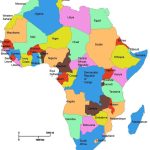 The flow of remittances to Zimbabwe is huge, with diaspora remittances from outside the country estimated at over US$1 billion per annum, or around 16% of total foreign exchange receipts. This comes from a large network in the diaspora, whether in the region (mostly South Africa) or further afield, including the UK.
The flow of remittances to Zimbabwe is huge, with diaspora remittances from outside the country estimated at over US$1 billion per annum, or around 16% of total foreign exchange receipts. This comes from a large network in the diaspora, whether in the region (mostly South Africa) or further afield, including the UK.
Remittances also flow internally within the country, from people working in town in government jobs or in businesses of different sorts. Flows of finance also come from off-farm work, including artisanal mining, which is very significant especially for younger men in some parts of the country.
However, remittance flows are subject to wider economic and political conditions, both internationally and within Zimbabwe. Despite many expecting a dip in international remittances during the COVID-19 pandemic as relatives were retrenched and economic conditions worsened in many parts of the world, they actually increased, crossing the US$1billion mark, as relatives abroad “rose to the occasion”.
International remittances however are always uncertain. Xenophobic attacks on Zimbabweans in South Africa make many fear to go and others return. Meanwhile, new, restrictive immigration requirements in the UK, preventing families from being together, will put many off joining the flow of labour to support the UK’s health and care system.
Within Zimbabwe, with the on-going economic crisis now persisting over 25 years, the option for paid work outside farming has contracted, and the possibilities of sending money to rural home areas has declined. Indeed, remittance flows have reversed in many instances, with farmers in the land reform areas supplying food to those in town or relatives in the communal areas, as discussed further below.
Remittances have long been part of the financing of agriculture in Zimbabwe. In the relatively stable economic conditions of 1980s, for example, around 65% of farm income was derived from remittances from all sources in the communal areas, with significant impacts on poverty reduction.
The old pattern of migration to off-farm work in towns, on farms and in the mines established in the colonial era persisted. The ‘reserves’ (now communal areas) were areas where labour resided and could be contracted for periods in what was the core economy, controlled by the white racial minority.
Following independence in 1980, this pattern persisted, but has changed dramatically since the late 1990s, when the old core economy declined due the effects of first structural adjustment and after 2000 due to land reform.
These changes resulted in the emergence of a new, largely informal economy centred on small-scale farms and micro-enterprises of different sorts, with the post-2000 resettlement areas at the core of a new rural economy.
Women became more involved, as traders and small-scale entrepreneurs, as the reconfigured land use provided new opportunities, especially around the growth of local value chains and the small towns in former large-scale farming areas, as we’ve documented extensively on this blog.
Continued next page
(181 VIEWS)

